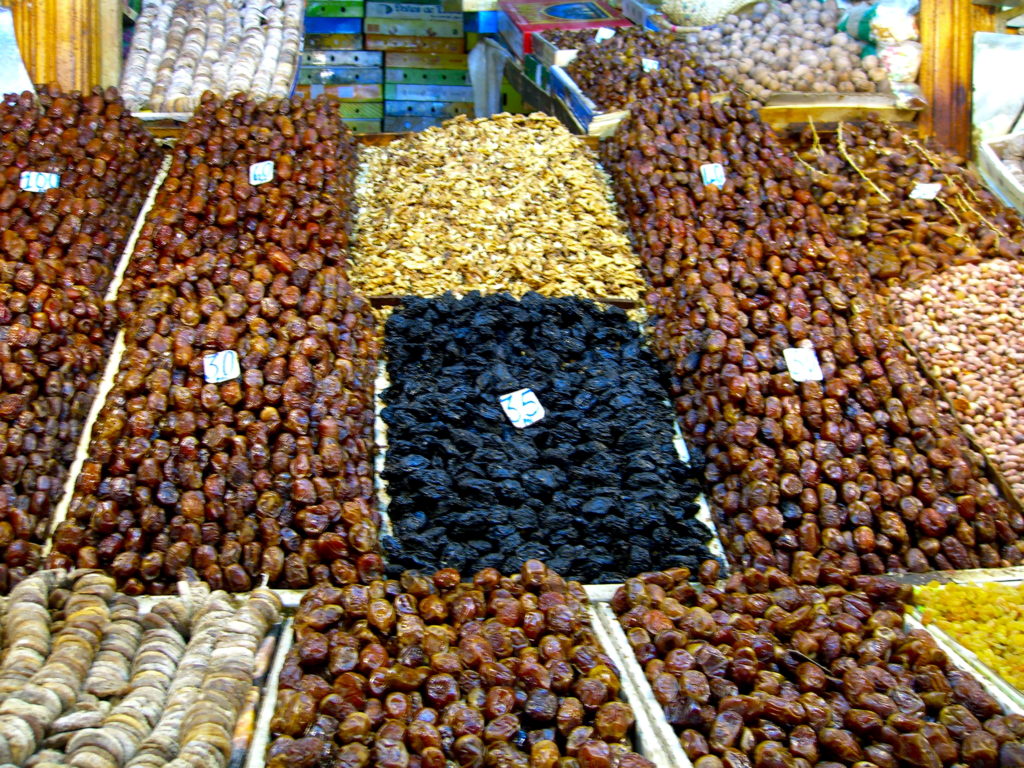Day 2 – Saturday, May 1 – The city of Meknes -Bab El Mansour is the most beautiful gate into a city in north Africa, and the fourth most beautiful gate in the world.
This city is the burial place of Muhammad and the site of the first Islamic mosque. It is the second most holy city. Al Medina is the arabic name of the city and is the site of the Palace El Hedim.
The gate was the last important project of Sultan Moulay Ismail.
The architect was a christian convert to Islam, named, Mansour Laalej. Mansour translates into “Victories Renegade,” in Arabic. He wished to rise in the court of the Sultan and so designed this wonderful gate.
The gate was built to pay homage to the sultan in 1732.
The white and green tiles are called zeille tiles and decorate the gate in a concave and convex tiled surface which creates the illusion of an intricate fabric or embroidered cloth. Above in Arabic writing is an inscription which reads: “I am the most beautiful gate in Morocco. I am like the moon in the sky. Property and wealth are written on my front.”
The French novelist, Pierre Loti (1850-1923) described the gate as a “glimmering, glinting priceless tapestry placed over these ancient stones to relieve the monotony of these towering walls.
Notice the small holes in the wall. I believe they were used to place boards into to support the scaffolding as the walls were constructed. Lumber is a scare commodity in this desert landscape.
The gateway is 16m tall and 8m wide, but it is not in use today. There is a smaller side door to be used to enter the medina. Medina means non-european portion of a town.
There are over 20 gates in the 40 km of protective wall around the city.
There is an interesting story about the architect and the sultan having a conversation about the finished gate. You might want to read it. It is interesting in a few ways.

